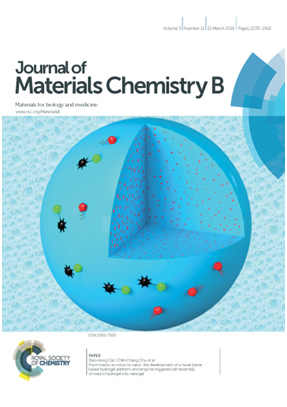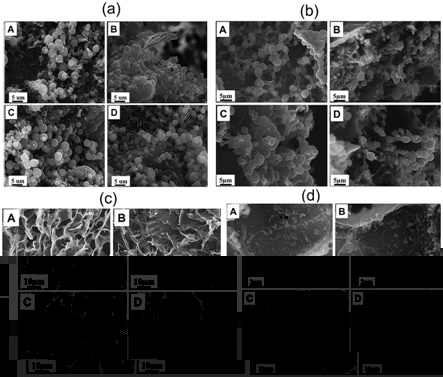Recently, Professor Xiaohong Qin and associate professor Dequn Wu in Donghua University have cooperation with Cornell University and the research paper entitled “From macro to micro to nano: development of a novel lysine based hydrogel platform and the enzyme triggered self-assembly of macro hydrogel into nanogel” was published on the one of the most important journal inmaterials field Journal of Materials Chemistry B(J. Mater. Chem. B, 2015,3, 2286-2294,DOI: 10.1039/C4TB01902D). The research was invited to submit the cover of the issue of Journal of Materials Chemistry B and was considered as Hot Papers from themed collection 2015 Journal of Materials Chemistry B.
The research explored the enzyme biodegradation of poly(ester amide) based on the amino acid and discovered that the poly(ester amide) could be biodegraded into nanogel under different enzymes and the size can be controlled by the sorts of enzymes and concentration and biodegradation time of enzymes. The nanogels possess excellent biocompatibility and thus can be modified chemically owing to the amine and carboxyl groups on the surface of the nanogels. The achievement would provide a new method in functionalization oftextiles.
Amino acids are the necessary nutrition in animal body, and it is the firsttime to report that pure hydrogels were prepared from the amino acids andthe size of the nanogels can be controlled by the enzyme biodegradation. The resultant nangels can be modified and grafted many chemical molecules, such as drug and fluorescence. The method to preparation of nanogels can be preloaded drug and the formed enzyme biodegradation system can load antibaterialdrug, such as Ag nanoparticle; organic anti-bacterial; uvioresistantagnt, such as nano-TiO2. The unique stability (can not be solved in water or organic solvevnts)of the nano carrier can be dispersed in water or organic solvents, or dispersed in polymer solutions. The nanogels dispersed polymer solution can be electrospun into nanofibers which the drug could be double controlled by nanogel and nanofifer.


(a) SEM images of the lysine based macrogels with an enzymetrypsin concentration of 0.1 mg mL-1 in PBS buffer (pH 7.4, 0.1 M) after1 day of biodegradation. (b) SEM images of the lysinebased hydrogel with an enzyme trypsin concentration of 0.1 mg mL-11in PBS buffer (pH 7.4, 0.1 M) after 3 days of biodegradation. (c) SEM images of the lysine based macrogels with an enzyme trypsinconcentration of 0.1 mg mL-11 in PBS buffer (pH 7.4, 0.1 M) after 4 daysbiodegradation. (d) SEM imagesof the lysine based macrogels with an enzyme trypsin concentration of0.1 mg mL-11 in PBS buffer (pH 7.4, 0.1 M) after 5 days of biodegradation.Microgels and nanogels are invisible because mostofthem have been washed out with PBS.

